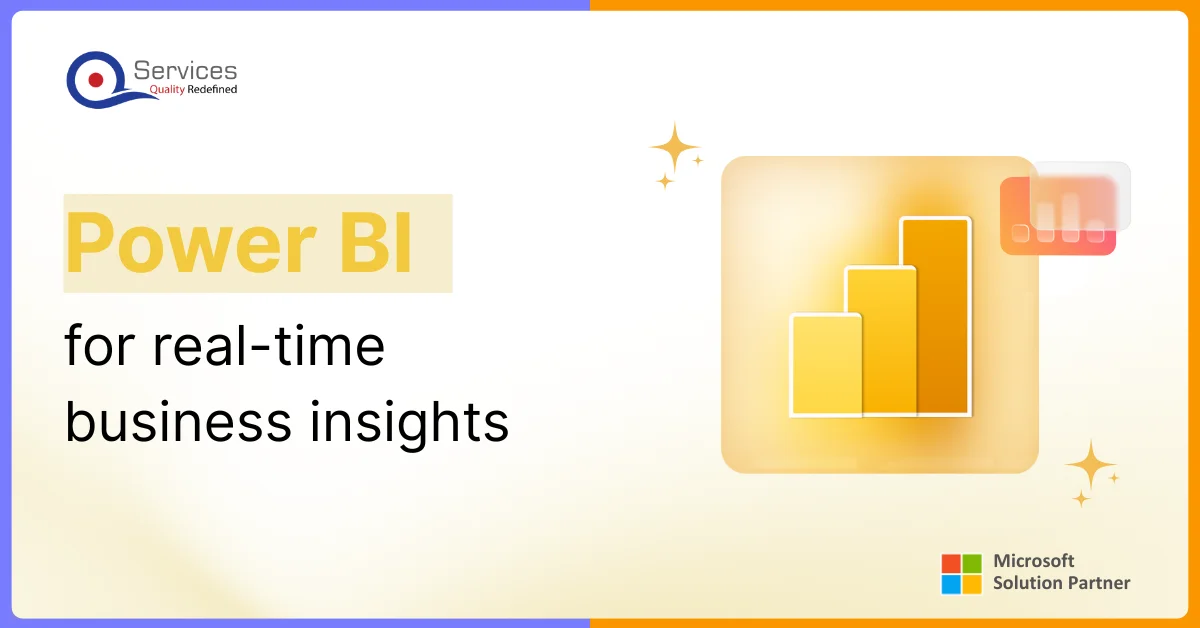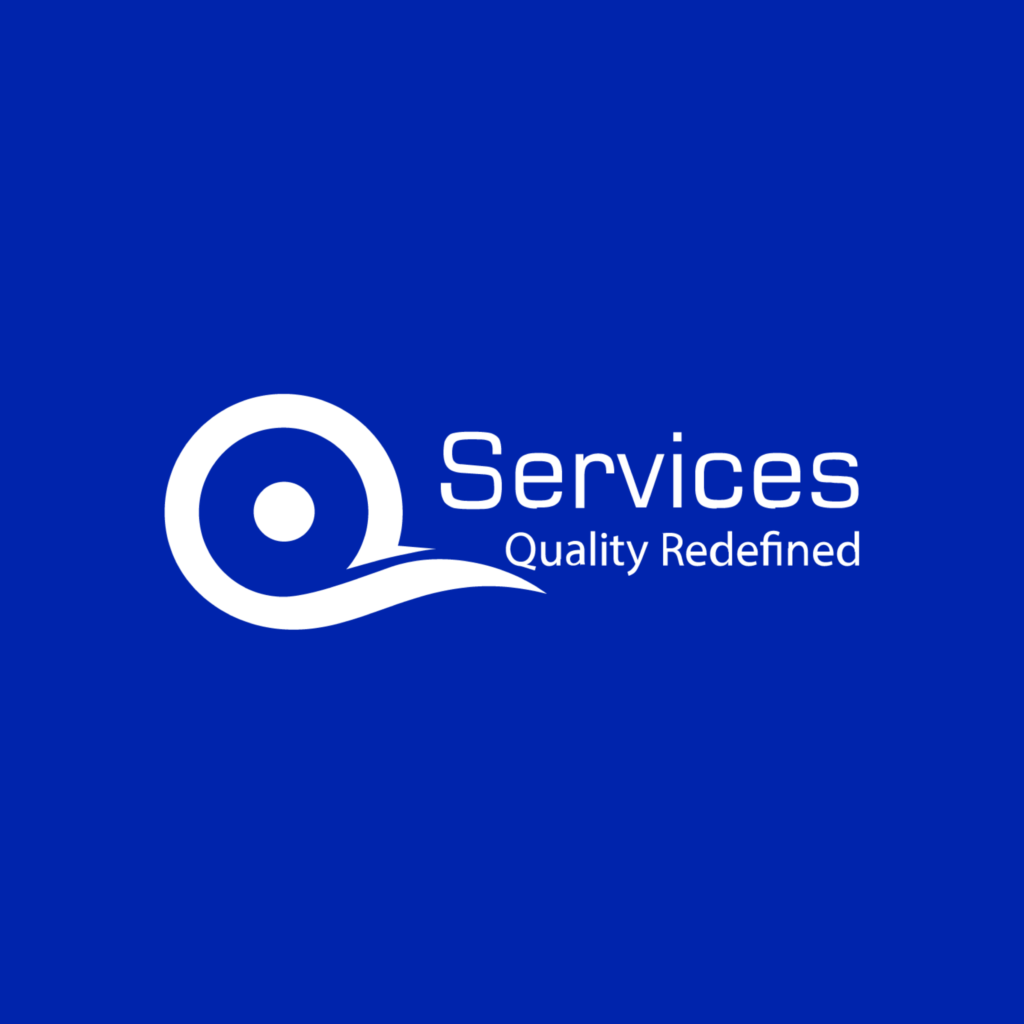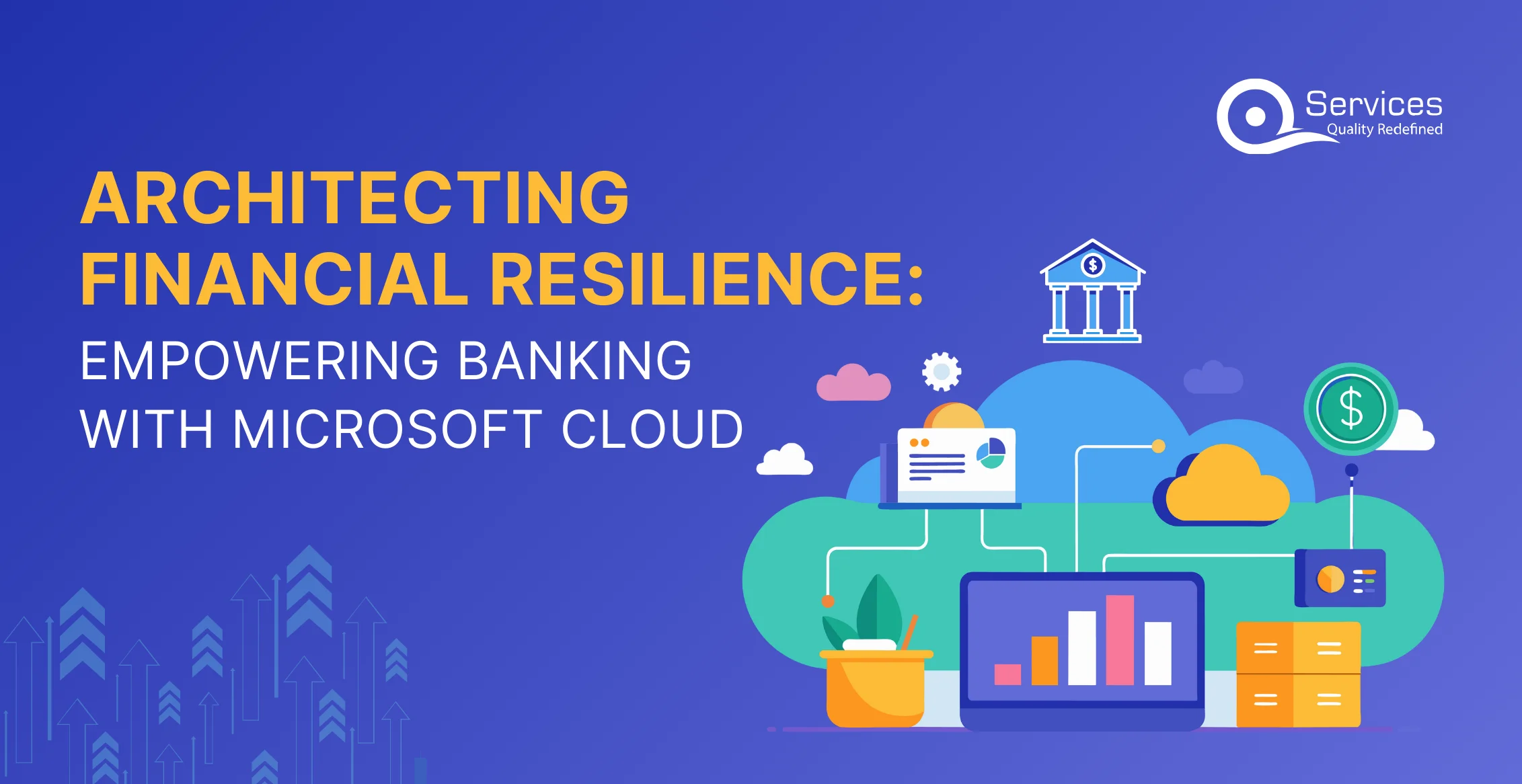
Home » Digitizing Traditional Financial Processes Using Power Platform Digital Solutions

Though the financial industry has evolved greatly from its days of relying heavily on paper records, are your finance team’s outdated procedures still causing problems? Although the term “digitization” has been around for a while, the main problem nowadays is updating outdated systems to handle the demands of a data-driven, fast-paced environment. Finance teams face mounting pressure to increase efficiency, reduce errors, and gain actionable insights—tasks that can seem daunting with outdated tools and manual processes.
Microsoft Power Platform offers a game-changing solution designed to address these pain points head-on. Imagine automating repetitive tasks with Power Automate, unlocking deep insights with Power BI, and seamlessly integrating with Dynamics 365—all without needing extensive coding skills. How can these tools simplify your operations while also propelling your finance team into a new era of productivity and strategic impact? Dive into how embracing Microsoft Power Platform solutions could be the key to overcoming your current financial process challenges and achieving a transformative leap forward.
Microsoft Power platform is a suite of low-code/no code tools designed to allow users to create personalized business applications, analyze data, automate processes, and build interactive reports and dashboards. Here are the key Microsoft Power Platform Components:
Power BI is a leading business analytics tool that helps transform raw data into insightful visualizations:
It offers interactive dashboards, real-time data updates, and sophisticated data visualization tools that are crucial for in-depth financial analysis.
Power BI enhances financial reporting by integrating diverse data sources into comprehensive reports, enabling users to track performance, identify trends, and make informed decisions with clarity.
Power Apps provides a low-code/no-code environment to create customized applications:
It helps finance teams to develop tailored applications for specific tasks such as expense tracking, budget management, and financial approvals without extensive programming skills.
By simplifying application development, Power Apps streamlines processes, enhances data accuracy, and improves operational efficiency through user-friendly and adaptable solutions.
Power Automate automates repetitive financial tasks through customizable workflows:
It automates tasks such as invoice approvals, payroll processing, and expense reporting, which reduces manual effort and minimizes errors.
This leads to increased productivity, consistent operations, and faster processing times by eliminating routine manual tasks and integrating seamlessly with various financial systems.
Power Pages empowers you to design bespoke, secure web portals and dynamic financial dashboards. These custom solutions enhance user accessibility and engagement by delivering a streamlined, interactive experience for accessing financial data.
Perfect for creating tailored portals for financial reporting, document management, and stakeholder communication. Power Pages facilitates a personalized digital environment that supports both internal processes and external client interactions, ensuring a cohesive and effective digital presence.
Microsoft Power Platform integration offers robust integration capabilities with existing financial systems:
Through a range of connectors and APIs, Power Platform integrates smoothly with current financial software, ensuring a consistent and streamlined data flow.
This integration minimizes manual data entry, enhances data accuracy, and ensures financial information is synchronized across different platforms.
Get free Consultation and let us know your project idea to turn into an amazing digital product.
Power Platform complements Microsoft Dynamics 365 and other financial applications:
Enhances Dynamics 365’s ERP and CRM functionalities by integrating Power BI, Power Apps, and Power Automate, creating a unified platform for managing financial operations and customer relationships.
Extends its capabilities to other financial tools, offering improved data management, streamlined processes, and enhanced reporting functionalities across various systems.
In the modern financial landscape, the absence of digitization in financial processes leads to numerous challenges and inefficiencies that can significantly hinder the performance and growth of organizations. Here are some of the key issues associated with manual financial processes:
Manual data entry in traditional financial processes consumes valuable time and is prone to errors. Paper-based processes further slow operations, as sorting, filing, and retrieving documents is labor-intensive, reducing overall efficiency.
Manual processes introduce a higher risk of human error, such as incorrect data entry and miscalculations. Without a centralized digital system, data duplication and inconsistencies become common, undermining the accuracy of financial records.
Manual financial processes delay the generation of reports, hindering real-time insights into financial performance. Without digitization, data remains static, limiting the ability to dynamically analyze trends and patterns for strategic decision-making.
Approval bottlenecks in manual systems slow down financial operations, such as invoice approvals and expense reimbursements. Poor communication and lack of integration between departments lead to inefficiencies and miscommunication, affecting overall productivity.
These are a significant drawback of manual financial processes. These processes are labor-intensive, requiring more staff to handle repetitive tasks, which drives up labor costs. Furthermore, managing physical documents necessitates ample storage space and supplies, such as paper, printers, and filing cabinets, adding to the overall expenses.
These are also critical issues with manual systems. Access to financial information is often restricted to those physically present in the office, complicating remote work scenarios. Without digital tools, collaboration on financial tasks can be cumbersome and inefficient, making it difficult for teams to work together seamlessly, especially in decentralized or remote work environments.
Tracking financial records for compliance purposes manually is not only laborious but also time-consuming. Additionally, maintaining an accurate and comprehensive audit trail is challenging without digitization, complicating the audit process and increasing the risk of non-compliance with financial regulations.
Scalability issues arise as businesses grow, making manual financial processes unsustainable. These processes cannot effectively scale to handle larger transaction volumes, limiting organizational growth. Moreover, manual systems struggle to adapt quickly to new financial regulations and market changes, reducing the business’s flexibility and ability to stay competitive.
Microsoft Power Platform offers transformative solutions that effectively address the common challenges faced by traditional financial processes.
Power Platform’s automation features, such as Power Automate, streamline repetitive tasks, reducing the need for extensive manual labor and lowering labor costs.
By transitioning to digital records, Power Platform eliminates the need for physical storage and supplies like paper and filing cabinets, leading to significant cost savings.
Power Platform tools, including Power Apps and Power Pages, offer remote access to financial data, allowing team members to collaborate from anywhere and enhancing overall accessibility.
Real-time data sharing and collaborative features in Power BI and Power Apps foster better teamwork, enabling more effective coordination and faster decision-making.
Power Platform streamlines monitoring and reporting, ensuring prompt and accurate upkeep of financial documents. This lowers the possibility of mistakes and assists companies in maintaining regulatory compliance.
Power BI’s strong reporting and data management capabilities enable firms to quickly and simply construct thorough audit trails, which improve audit efficiency and transparency. Using Power BI for financial reporting, organizations can enhance their audit processes and ensure greater accuracy in financial documentation.
Power Platform’s scalable solutions, such as Power Automate’s workflow automation and Power Apps’ custom applications, support businesses in handling increasing transaction volumes seamlessly.
The platform’s customizable tools allow businesses to quickly adapt to new financial regulations and market changes, ensuring that financial processes remain effective and relevant.
By leveraging these positive aspects of Microsoft Power Platform, organizations can transform their financial processes to be more efficient, cost-effective, and adaptable.
Banks are increasingly using Microsoft Power Platform solutions and Microsoft banking software to update their operations, enhance customer experiences, and boost efficiency. By taking advantage of these tools, banks can tackle various challenges and seize new opportunities. Here’s a look at some Power Platform use cases showing how banks are benefiting from these solutions:
Challenges: Traditional customer onboarding is often slow and involves lots of paperwork, leading to a frustrating experience for customers and higher costs for banks.
Power Platform Solution: Power Apps lets banks create custom applications to make onboarding easier. Customers can fill out forms and submit documents online, which speeds up the process and cuts down on manual work.
Challenges: Keeping up with regulations and managing risk requires careful tracking and lots of paperwork, which can be time-consuming and prone to mistakes.
Power Platform Solution: Power Automate helps banks automate tasks like tracking transactions and generating compliance reports. This ensures that regulations are met consistently and reduces human errors.
Challenges: Creating accurate financial reports can be difficult with old systems and manual data handling.
Power Platform Solution: Power BI for finance provides interactive dashboards and real-time data analysis. Banks use Power BI to gather data from different sources, visualize important metrics, and create detailed reports, helping with better decision-making.
Challenges: Processing loan applications can be slow and involve a lot of paperwork and approvals.
Power Platform Solution: Power Apps and Power Automate work together to streamline the loan process. Banks can use custom apps to collect applications and documents, while automated workflows handle approvals and disbursements, speeding up the entire process.
Challenges: Providing quick and effective customer support can be tough with traditional methods, leading to longer wait times and lower satisfaction.
Power Platform Solution: Power Virtual Agents lets banks deploy chatbots that assist customers with common questions and tasks. These chatbots provide round-the-clock support, handle routine issues, and pass complex problems to human agents, improving overall customer service.
Challenges: Effective internal communication can be hard with outdated methods, causing confusion and delays.
Power Platform Solution: Power Pages helps create internal portals for communication and document sharing. These portals keep all employees connected by centralizing information, tracking projects, and providing easy access to resources.
Challenges: Manual tasks like data entry and routine approvals can be time-consuming and inefficient.
Power Platform Solution: Power Automate automates these repetitive tasks, such as handling transactions and managing approvals. This reduces the need for manual work, speeds up processes, and allows staff to focus on more important tasks.
Challenges: Combining data from different systems can be complex, leading to data silos and inconsistencies.
Power Platform Solution: Power BI and Power Automate help integrate data from various sources, giving banks a clear, unified view of their information. This integration supports better decisions and more accurate reports.

As we look toward 2025, the finance sector is poised for significant transformation fueled by technological advancements and evolving industry practices. Here’s a comprehensive prediction shaping the future of finance:
Finance operations will increasingly rely on touchless transactions, thanks to advancements in automation and blockchain technology. Automation will take over routine tasks, minimizing manual involvement, while blockchain will ensure secure and transparent transaction processing.
The era of periodic financial reporting is giving way to real-time operations with the help of Power BI financial reporting. Businesses will move towards continuous data processing and immediate insights, allowing for faster responses to market changes and dynamic business conditions. This real-time approach will enhance agility and decision-making speed.
Self-service tools are set to become standard in finance, enabling users to manage their own data, generate reports, and perform analyses independently. While this shift may challenge traditional roles, it will ultimately enhance efficiency and agility by decentralizing financial tasks and accelerating decision-making.
Traditional ERP systems will face competition from modern finance applications and microservices, which offer greater flexibility and adaptability. This shift will move organizations away from rigid, monolithic ERP solutions towards more modular and customizable systems that better meet their specific needs.
The explosion of real-time data from a vast network of connected devices will revolutionize financial analysis and visualization. Advanced analytics and data visualization tools will enable finance professionals to delve deeper into data, uncover trends, and make more informed decisions. This transformation will empower organizations to leverage data-driven insights for strategic planning and operational efficiency.
The future of finance will see greater integration of artificial intelligence (AI), machine learning (ML), and advanced analytics. These technologies will automate complex tasks, forecast financial trends, and provide actionable insights, enhancing precision and effectiveness in financial operations.
The days of outdated financial processes are numbered because of the innovative capabilities of Microsoft Power Platform. By having tools like Power BI, Power Apps, Power Automate, and Power Pages, one can transform their operations and propel their team into a new era of productivity and strategic impact. So why stick with old habits when you can embrace the future and see just how smooth and efficient your financial processes can become? It’s time to take the leap and watch your finance team thrive in this digital age!
For more ways to optimize your business operations, check out our previous blog “10 Ways to Enhance Business Operations with Power Platform Integration.” This guide provides valuable insights on leveraging Power Platform to streamline workflows, boost efficiency, and drive innovation across your organization. Don’t miss out on these essential tips to take your business to the next level!

Our Articles are a precise collection of research and work done throughout our projects as well as our expert Foresight for the upcoming Changes in the IT Industry. We are a premier software and mobile application development firm, catering specifically to small and medium-sized businesses (SMBs). As a Microsoft Certified company, we offer a suite of services encompassing Software and Mobile Application Development, Microsoft Azure, Dynamics 365 CRM, and Microsoft PowerAutomate. Our team, comprising 90 skilled professionals, is dedicated to driving digital and app innovation, ensuring our clients receive top-tier, tailor-made solutions that align with their unique business needs.

In this blog, we’ll explore how AI-driven automation is reshaping banking. From boosting operational efficiency to improving compliance and risk management, we’ll look at how this technology is creating smarter, more adaptive financial systems.

The financial services industry is at a major turning point, driven by rapid digital innovation. Banks and financial institutions are increasingly adopting cloud solutions, not just to save costs, but as a key component of new service delivery models. The cloud’s agility, scalability, and security help banks meet the evolving needs of customers and regulators.

Over 70% of customers consider tailored offers to be highly significant for banks and financial companies. FinTech’s and financial institutions (FIs) can now deliver customized experiences that increase client satisfaction and loyalty by leveraging the power of AI.
Power Platform is a suite of low-code/no-code tools by Microsoft that allows organizations to create custom applications, automate workflows, and analyze data. It includes Power Apps (for building apps), Power Automate (for workflow automation), Power BI (for data visualization), and Dataverse (for data storage).
Low-code development: Power Platform enables both citizen and professional developers to create applications with minimal custom code, making it easier to build and maintain solutions.
Integration: It seamlessly integrates with other Microsoft products (such as Excel, SharePoint, and Dynamics 365) and third-party services.
Data modeling: Dataverse provides a robust data model for storing financial data, allowing efficient navigation and relationships between records.
Model-driven apps: Power Apps model-driven apps are ideal for scenarios with complex data relationships. They provide a tabular experience and allow users to navigate between related records.
Excel-like user experience: Model-driven apps can retain a familiar Excel-like interface, which is crucial for finance personnel who heavily rely on spreadsheets for financial planning.
Power Platform is a suite of low-code/no-code tools by Microsoft that allows organizations to create custom applications, automate workflows, and analyze data. It includes Power Apps (for building apps), Power Automate (for workflow automation), Power BI (for data visualization), and Dataverse (for data storage).
Low-code development: Power Platform enables both citizen and professional developers to create applications with minimal custom code, making it easier to build and maintain solutions.
Integration: It seamlessly integrates with other Microsoft products (such as Excel, SharePoint, and Dynamics 365) and third-party services.
Data modeling: Dataverse provides a robust data model for storing financial data, allowing efficient navigation and relationships between records.
Model-driven apps: Power Apps model-driven apps are ideal for scenarios with complex data relationships. They provide a tabular experience and allow users to navigate between related records.
Excel-like user experience: Model-driven apps can retain a familiar Excel-like interface, which is crucial for finance personnel who heavily rely on spreadsheets for financial planning.

Founder and CEO

Chief Sales Officer
